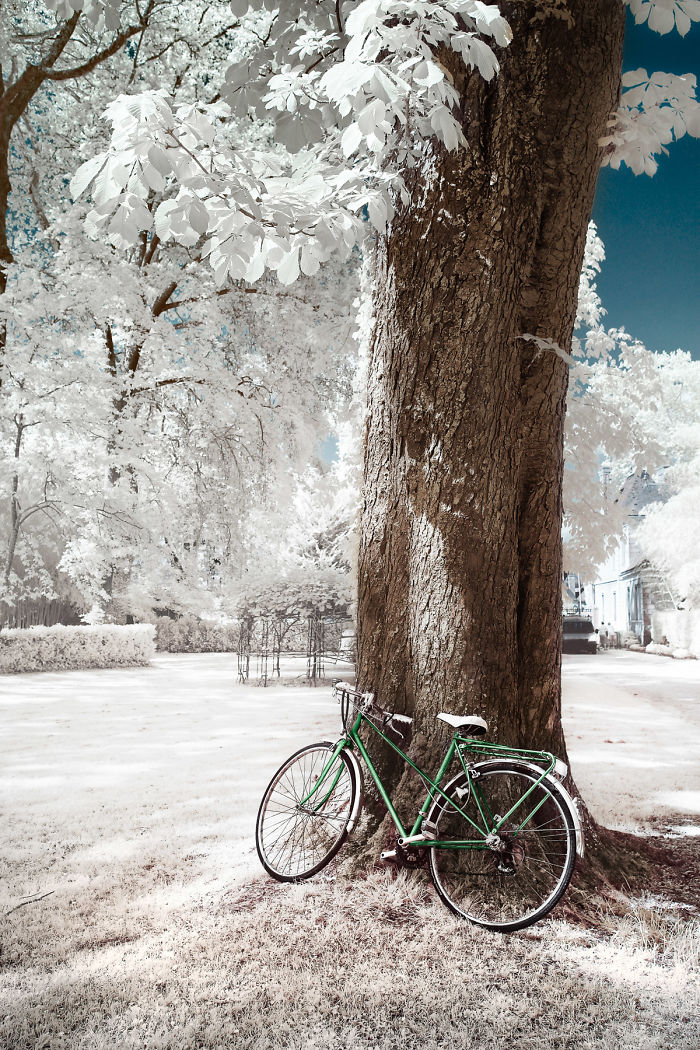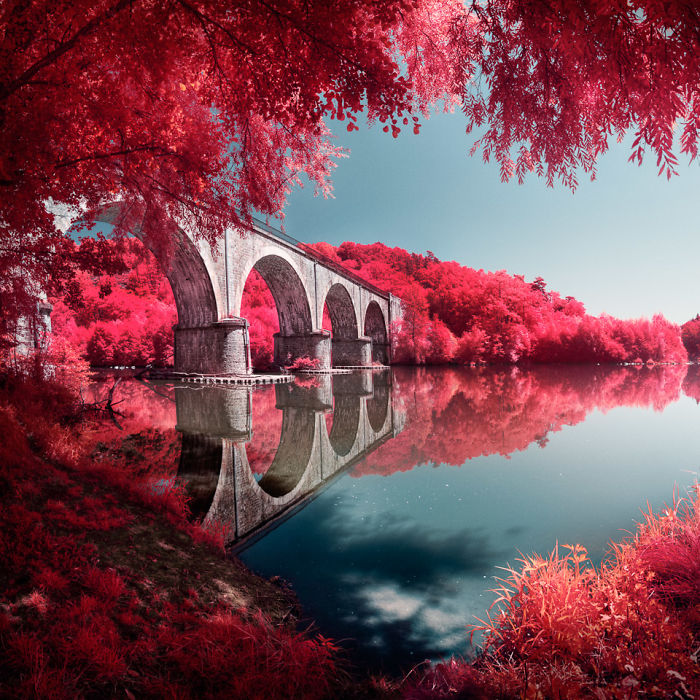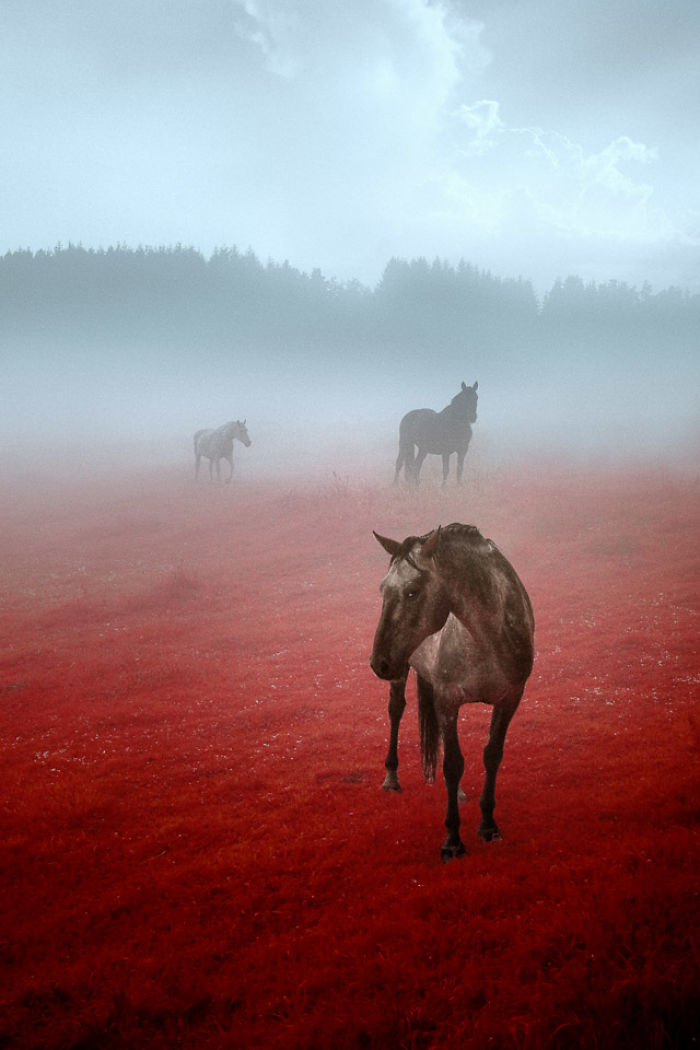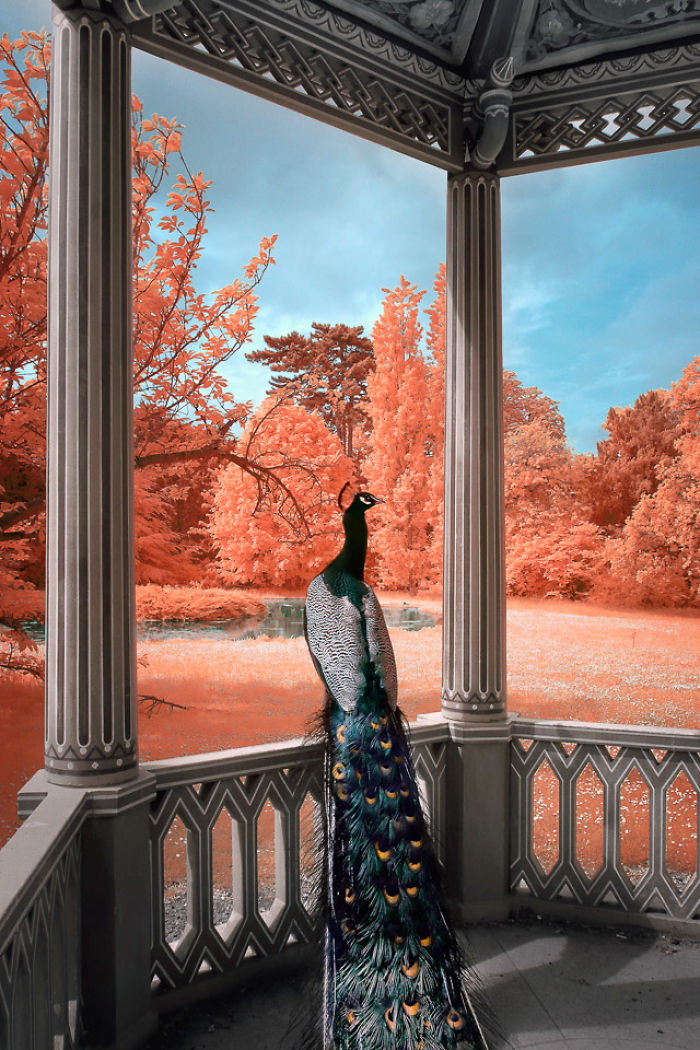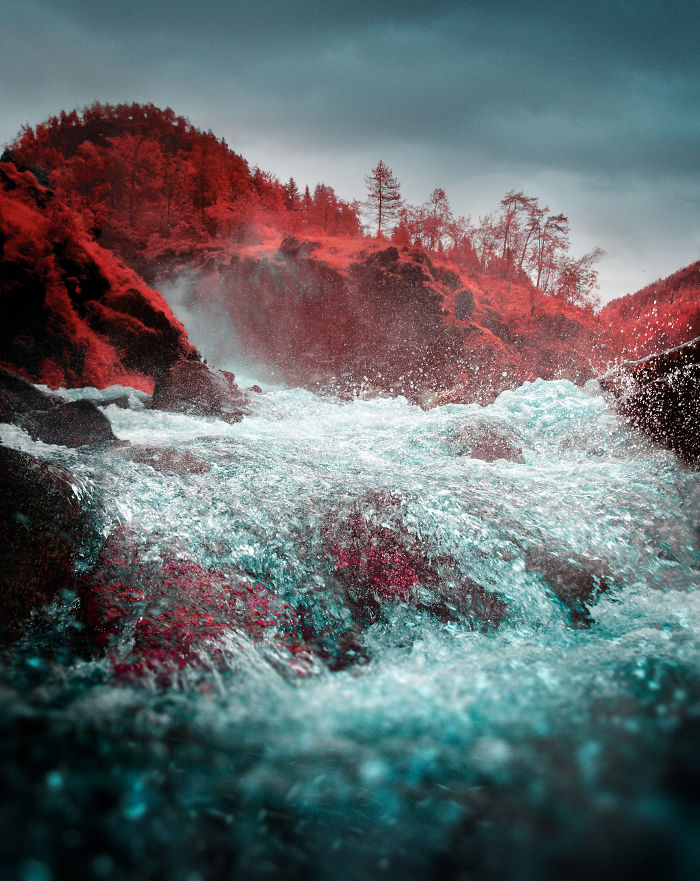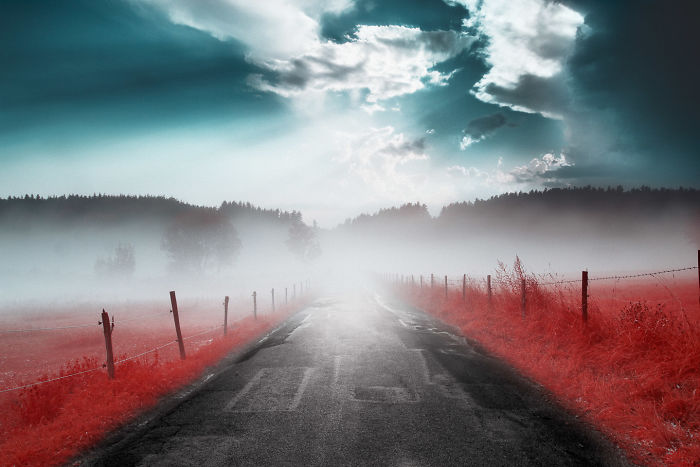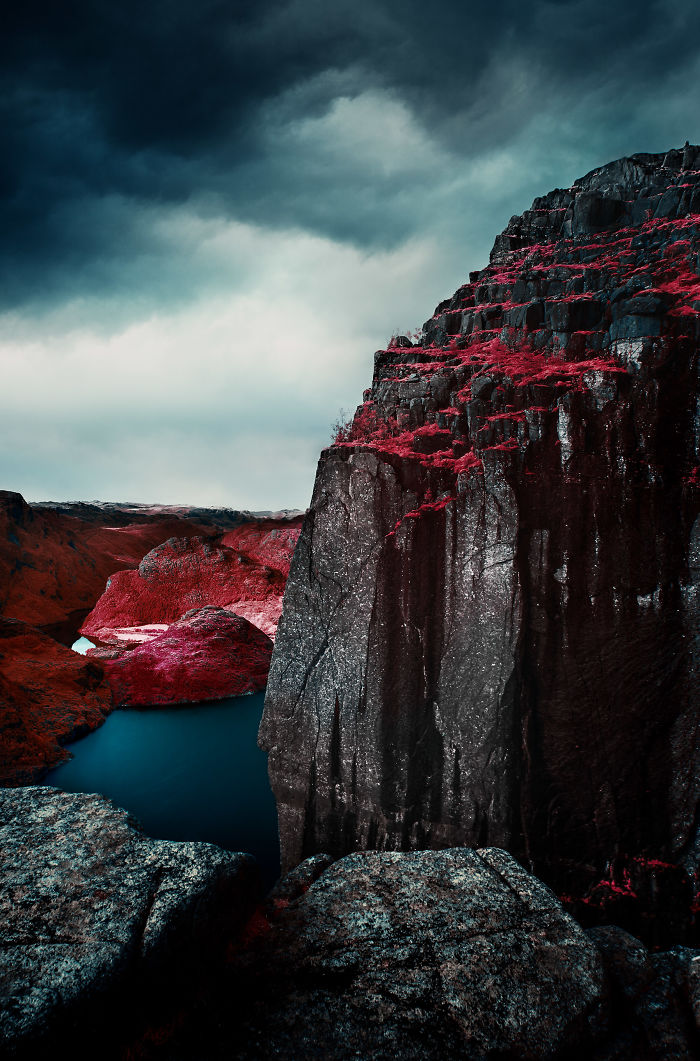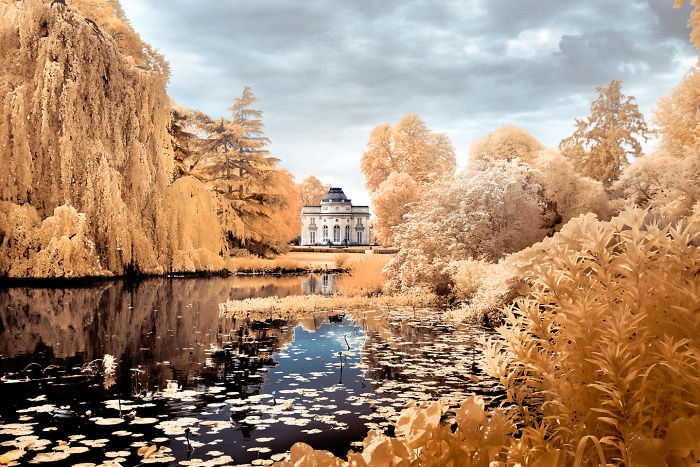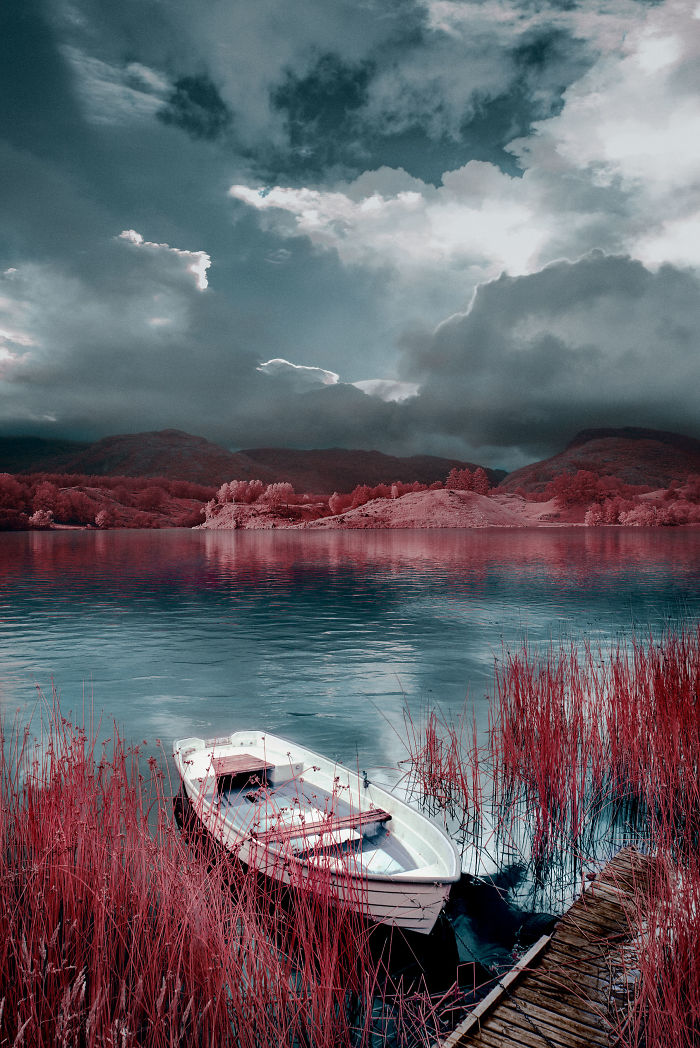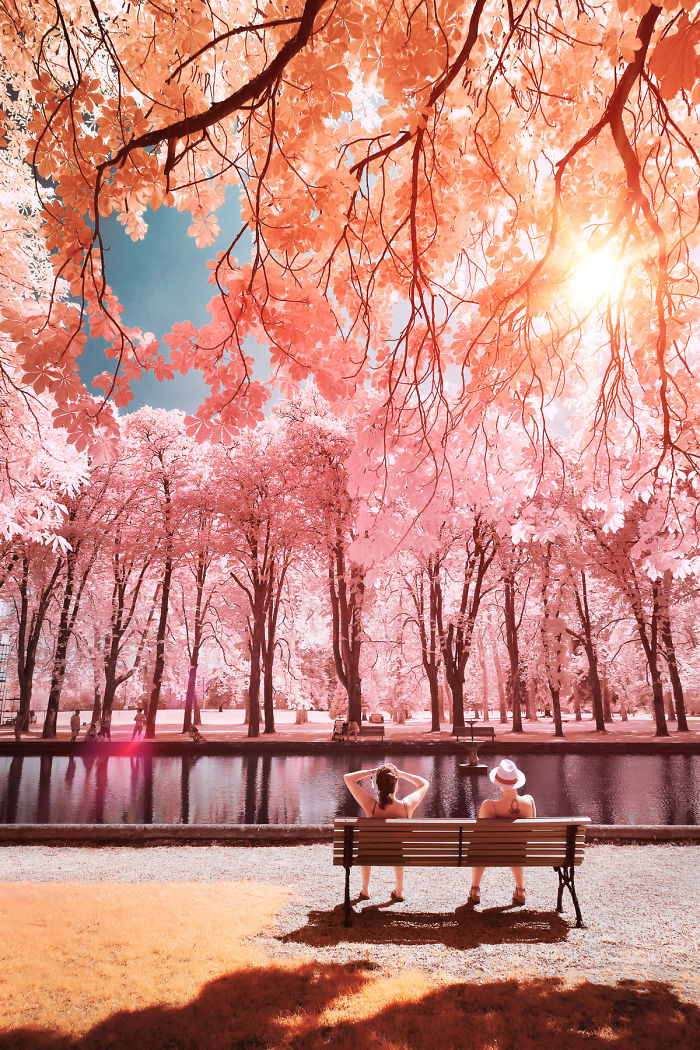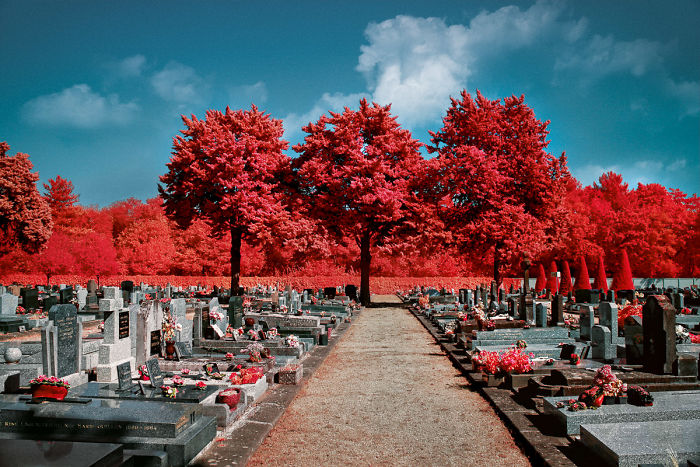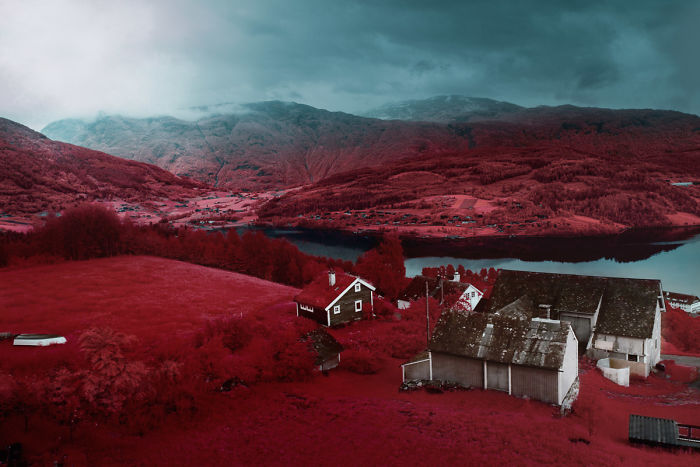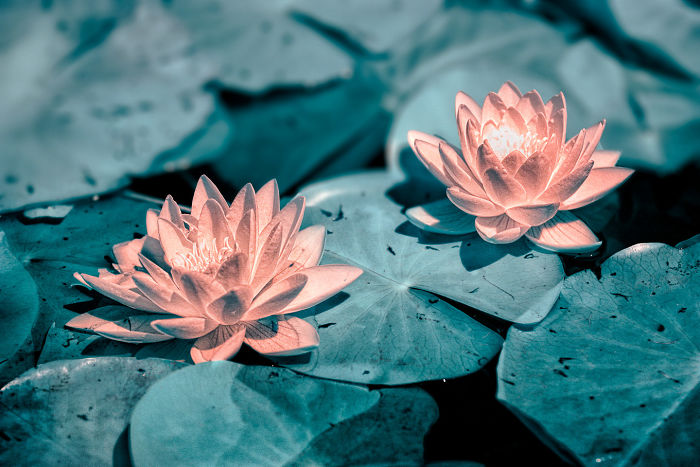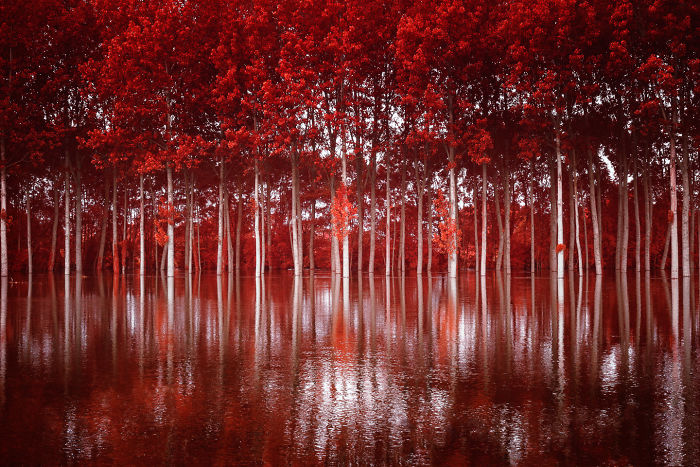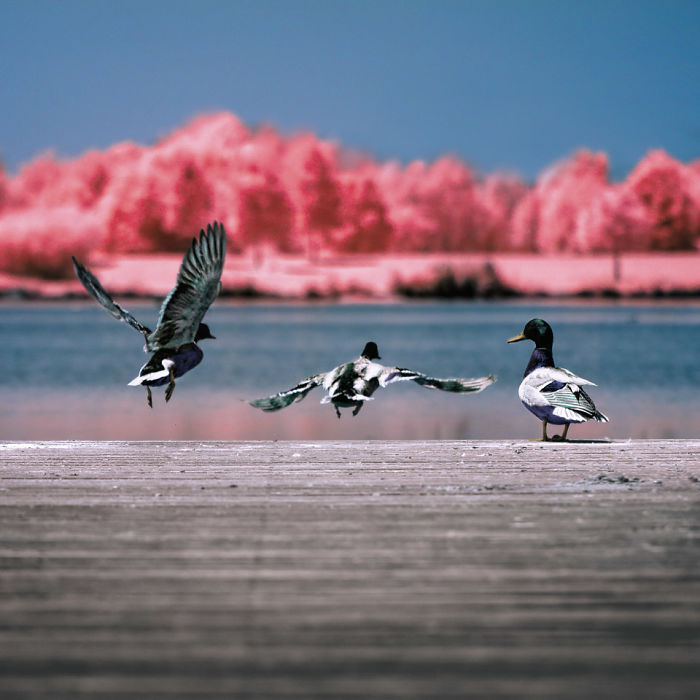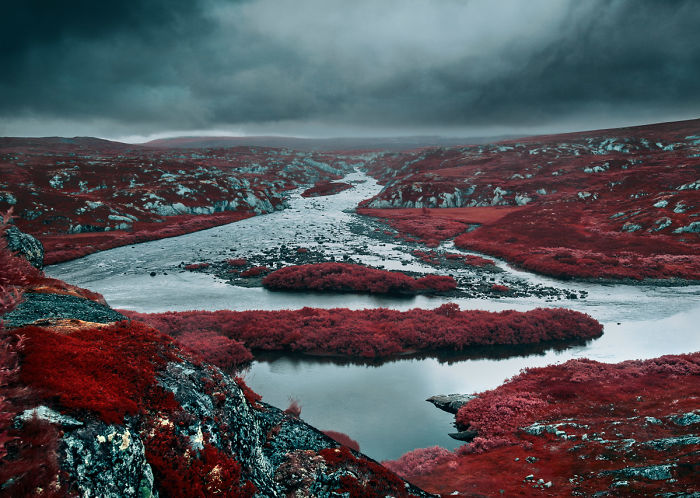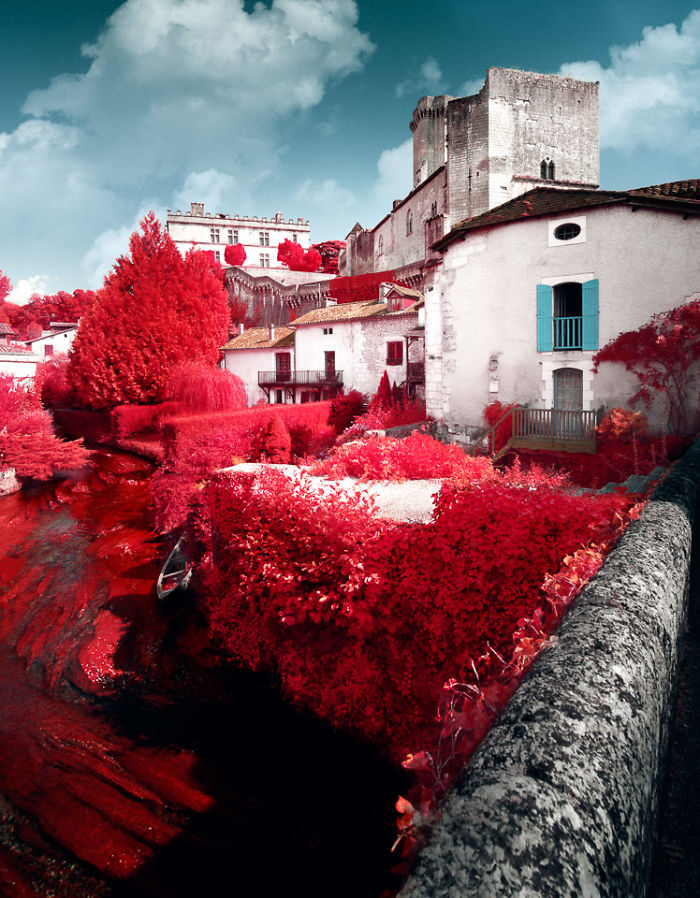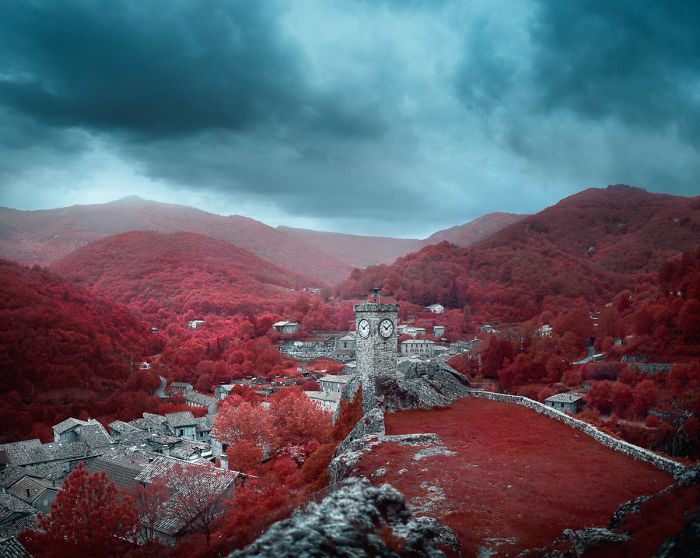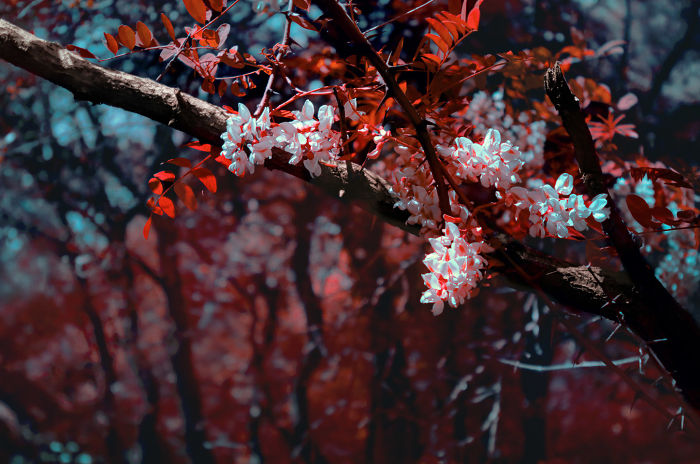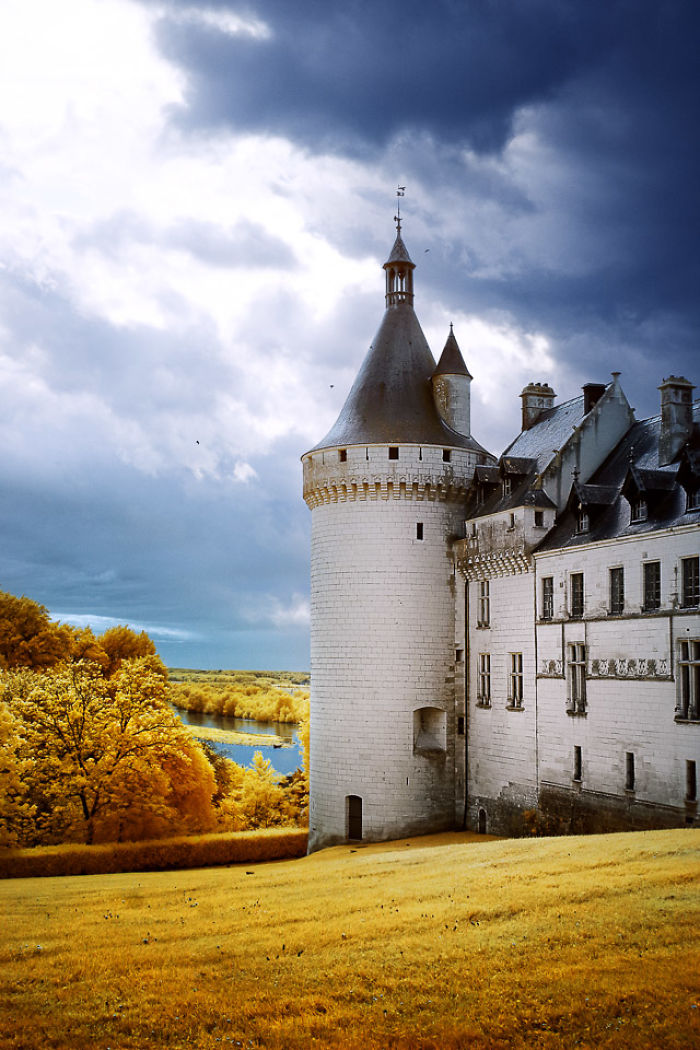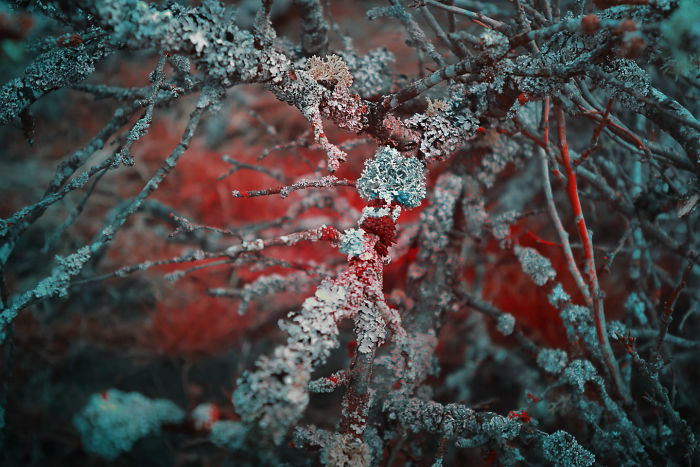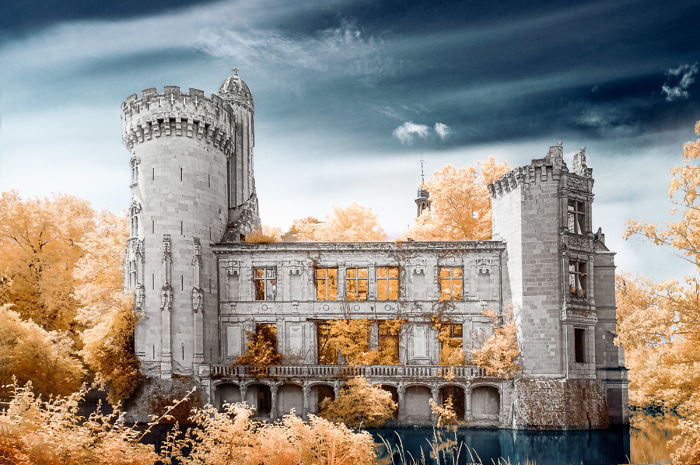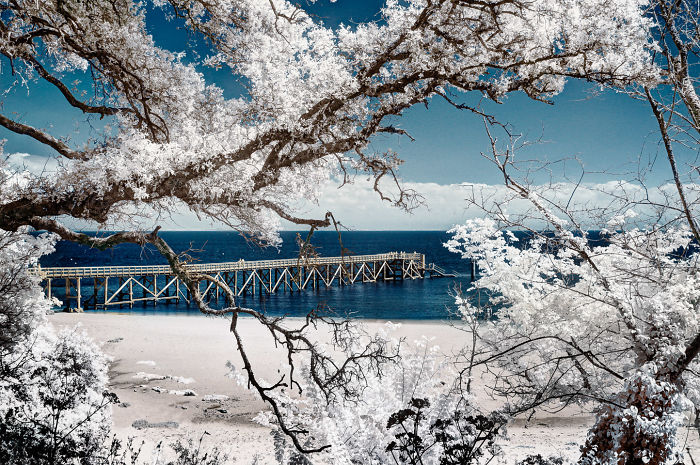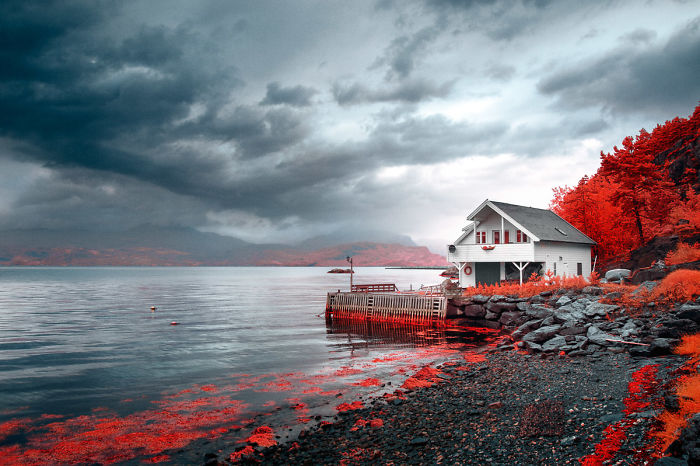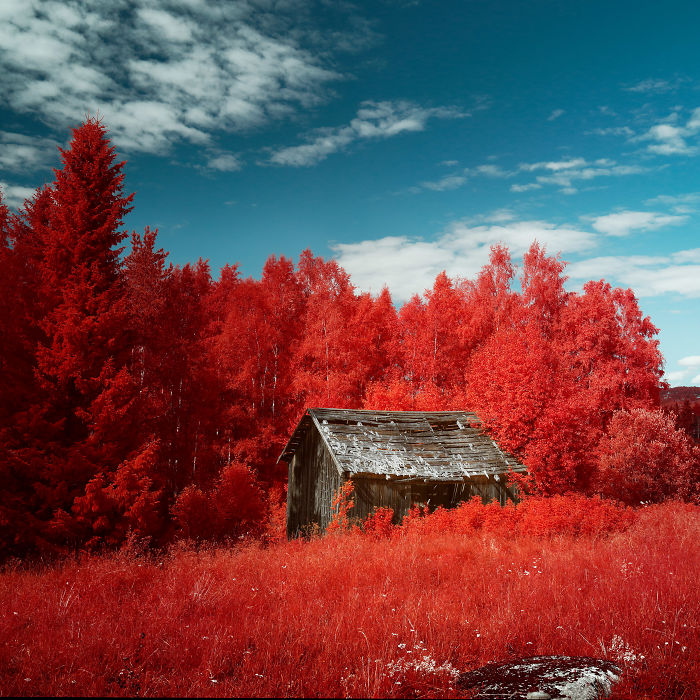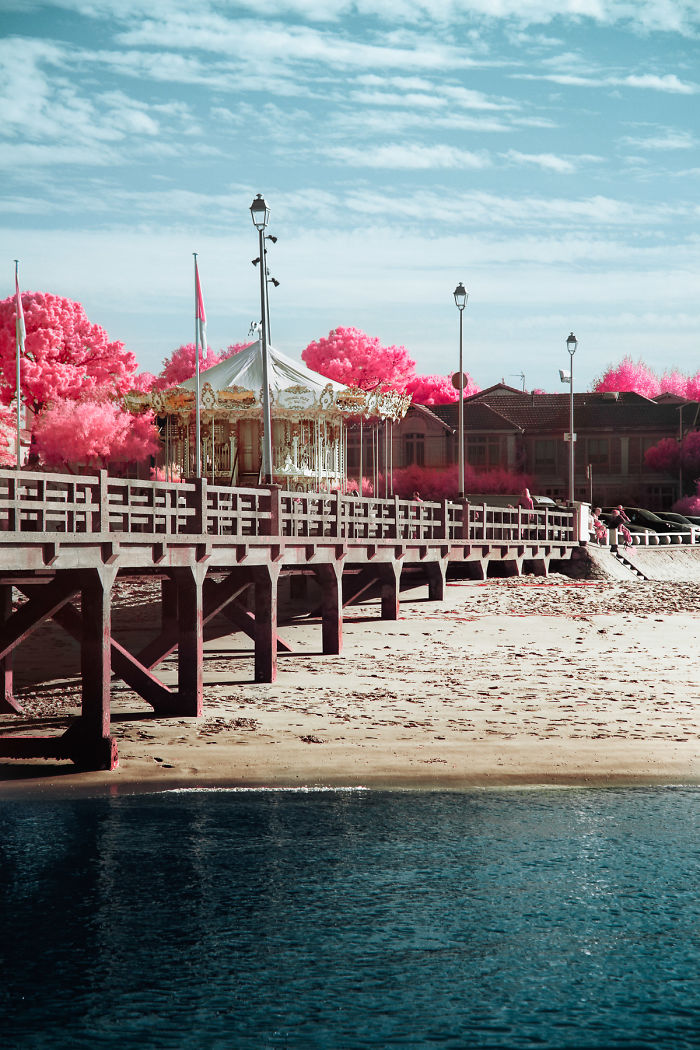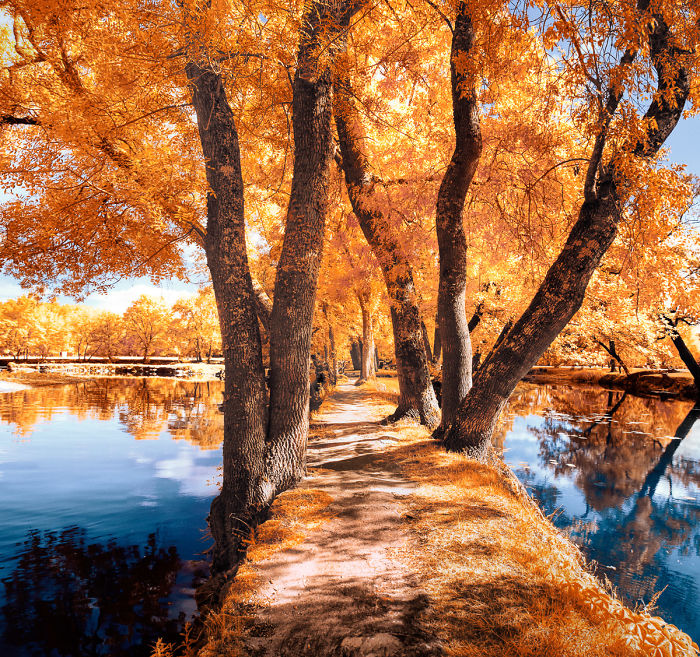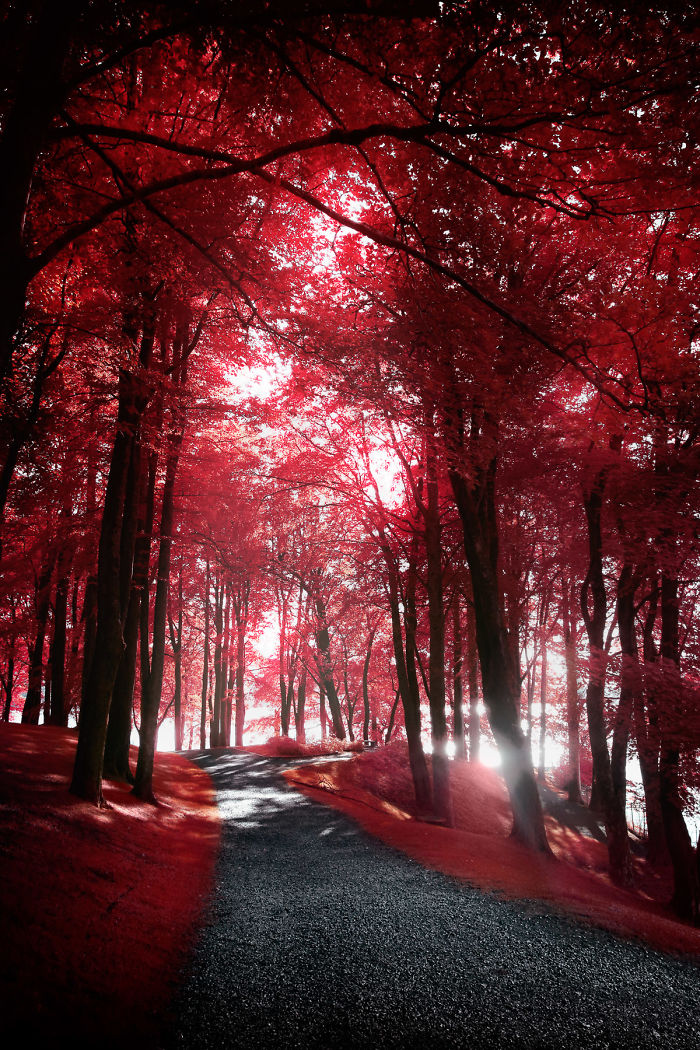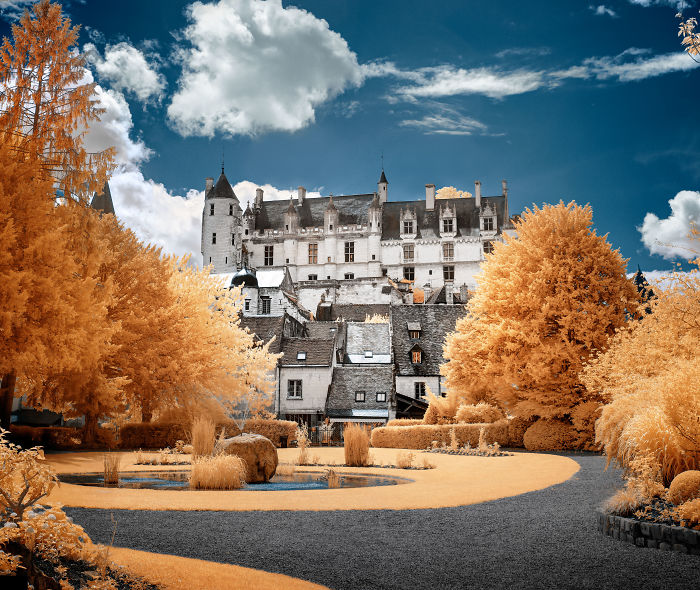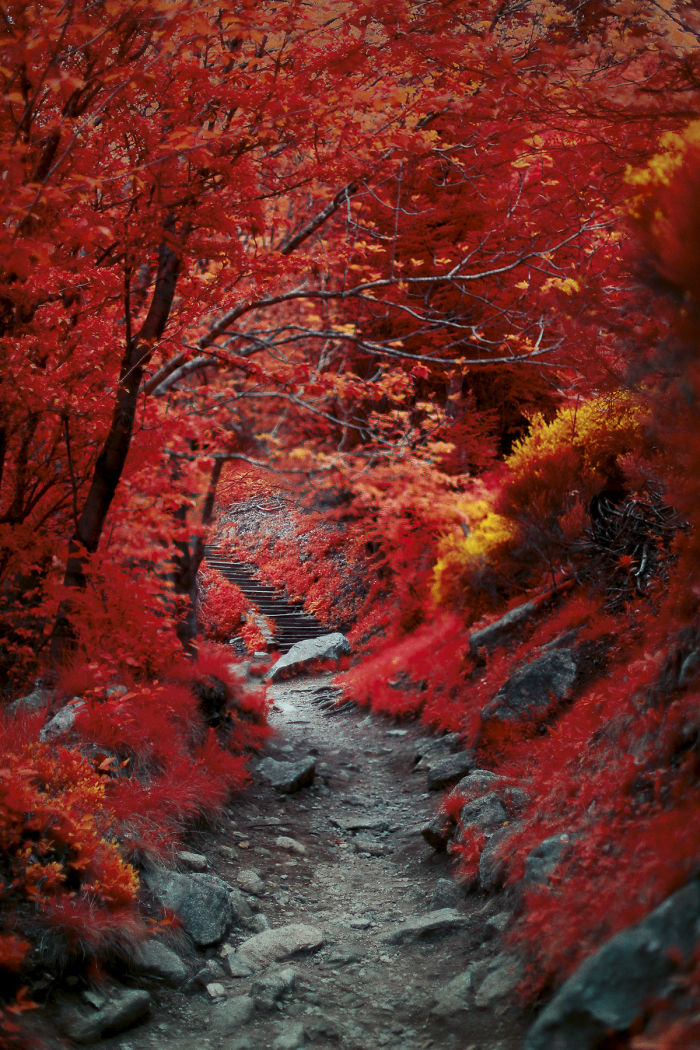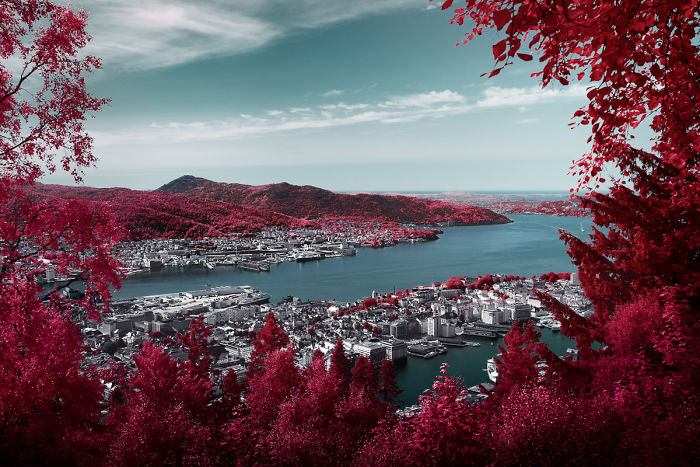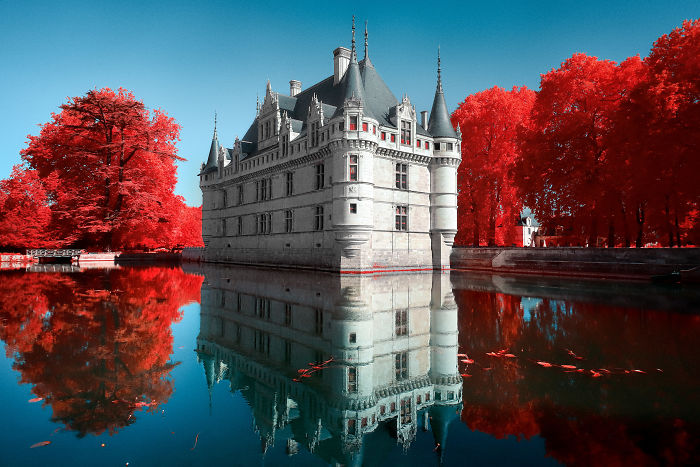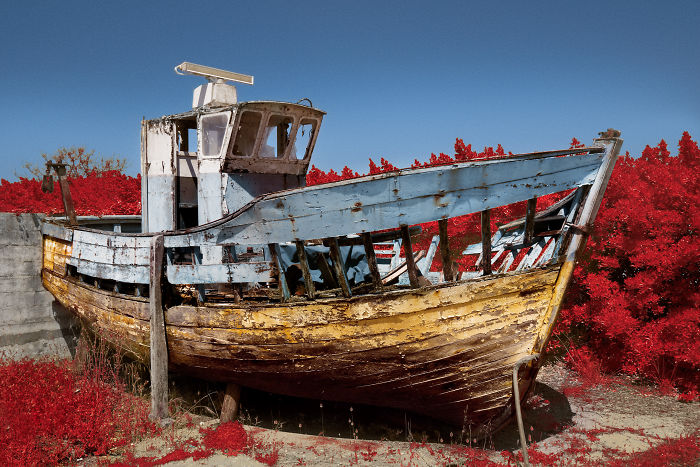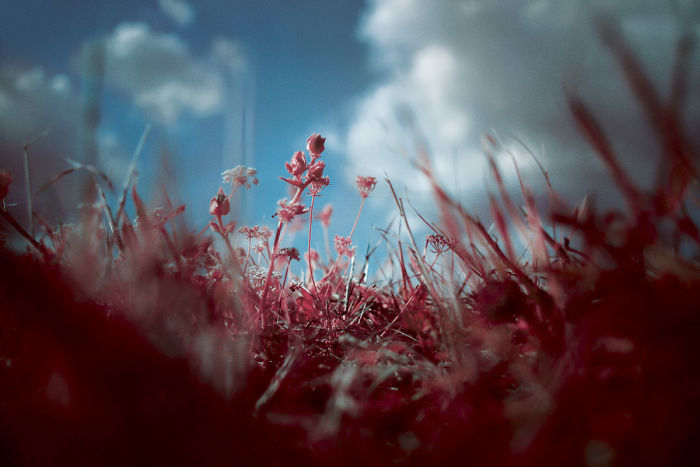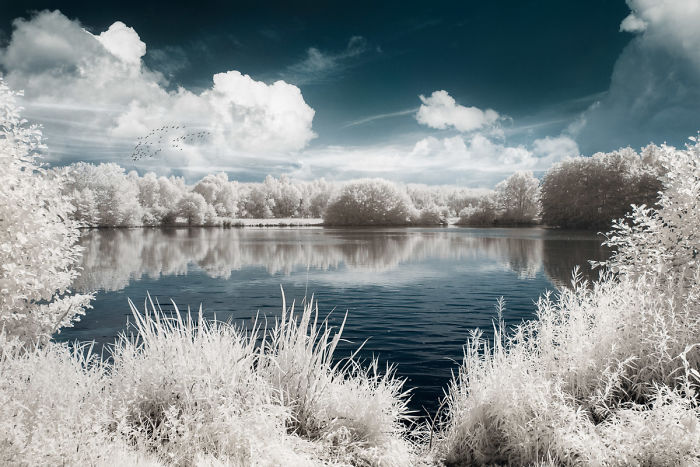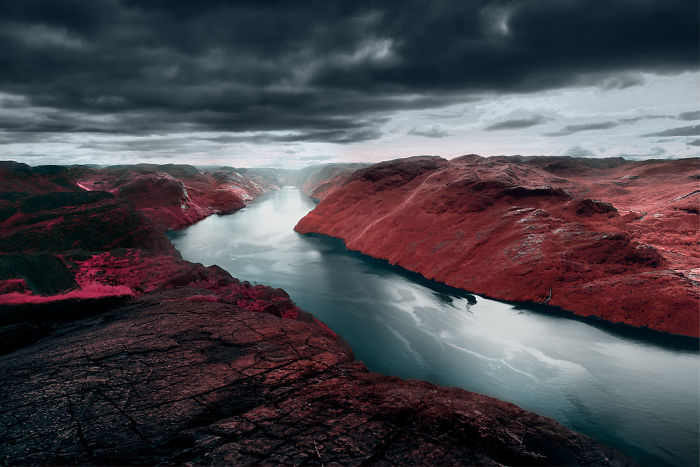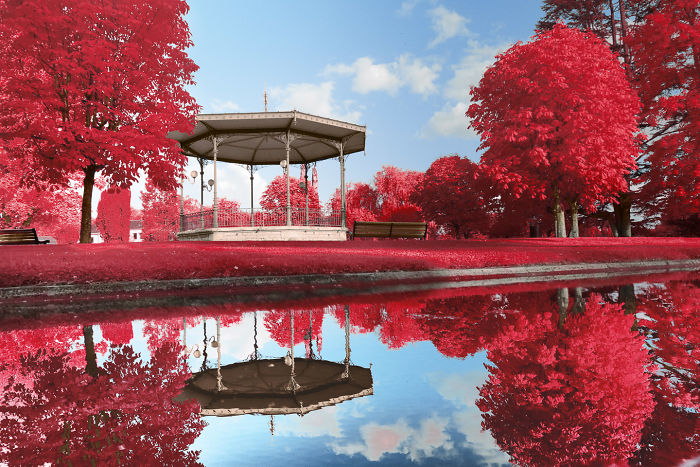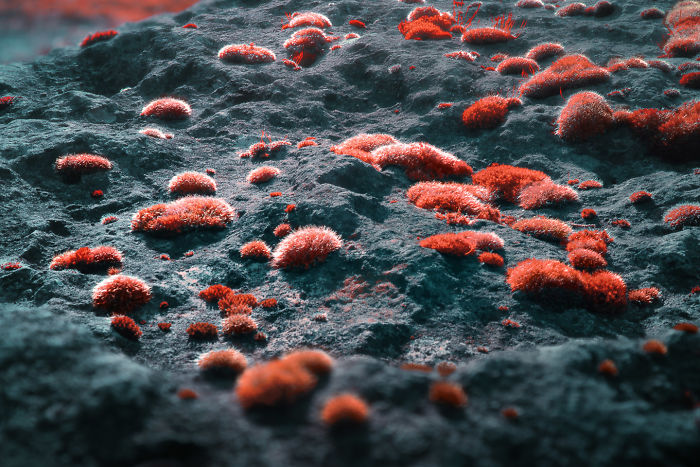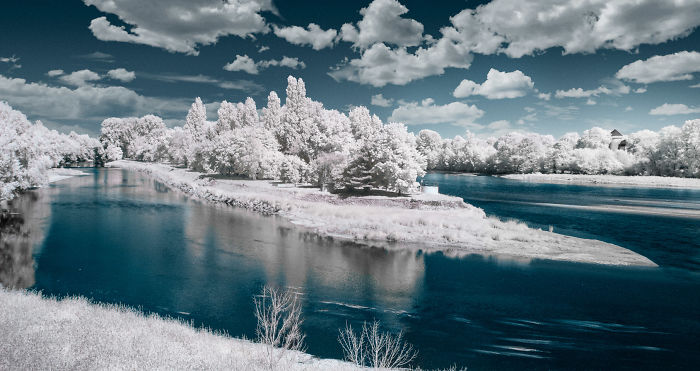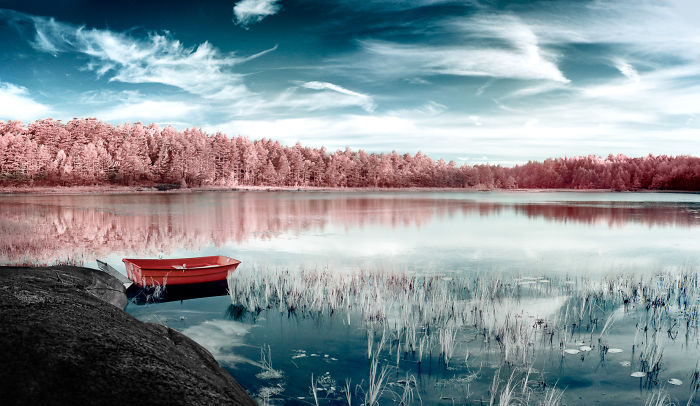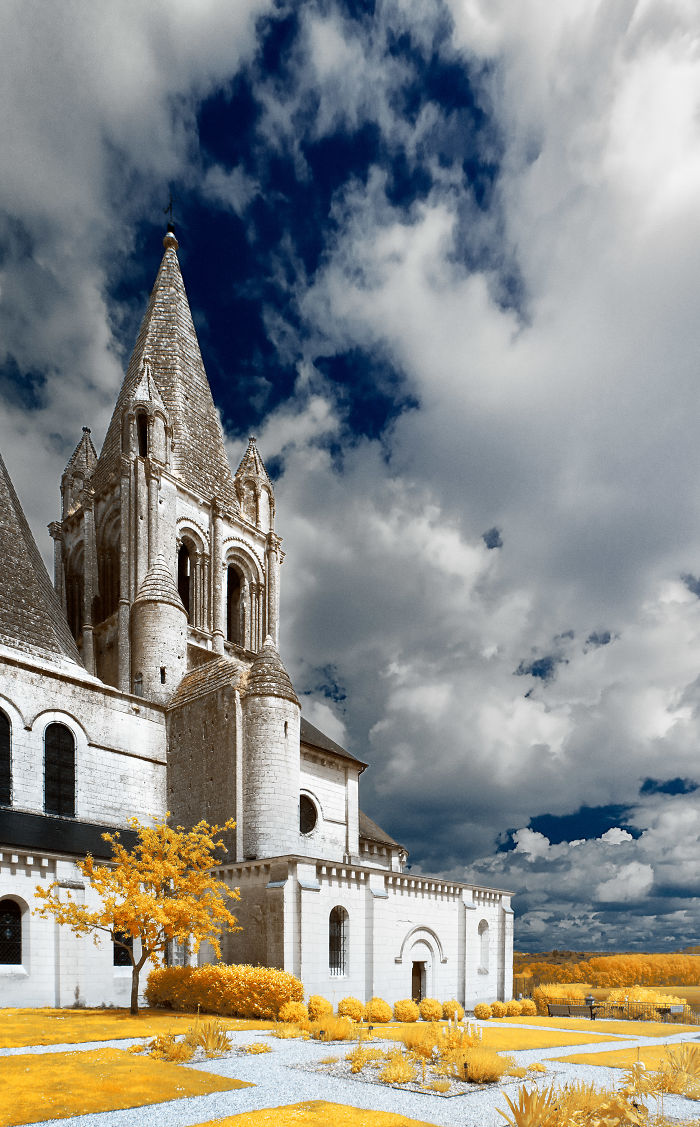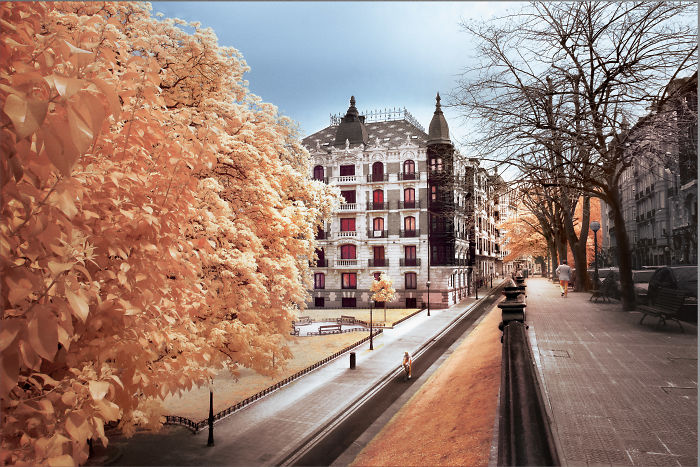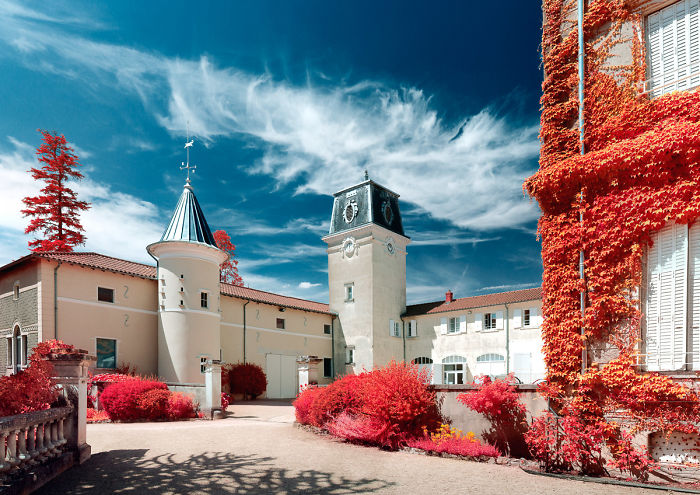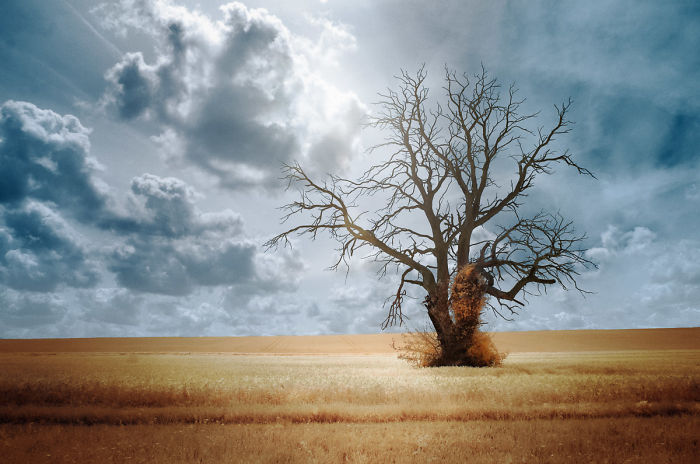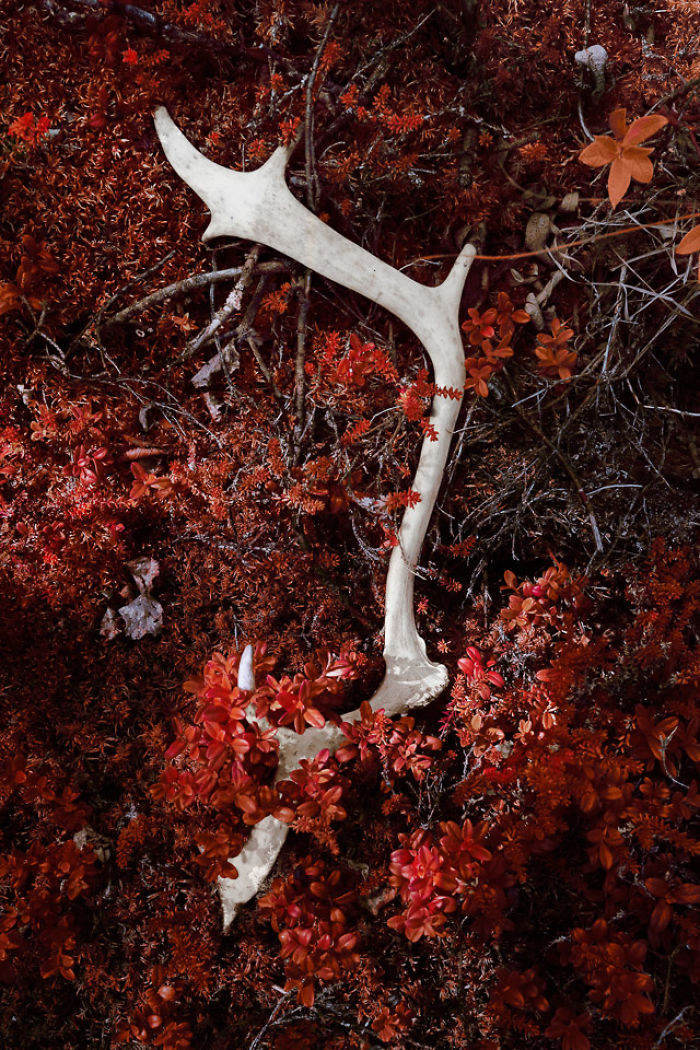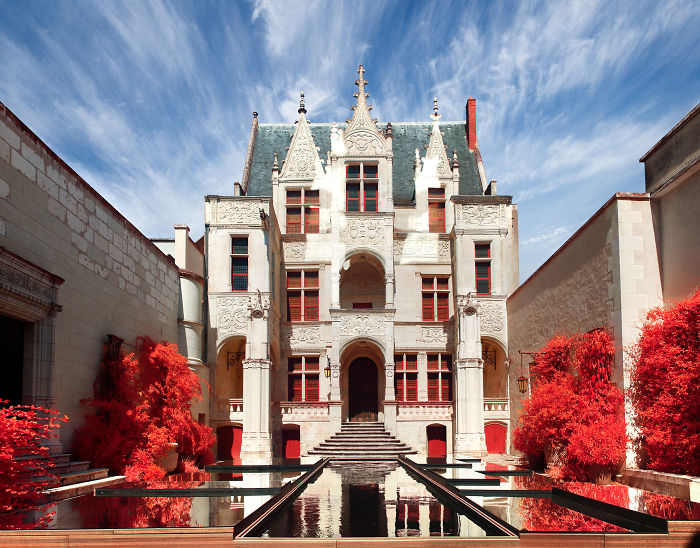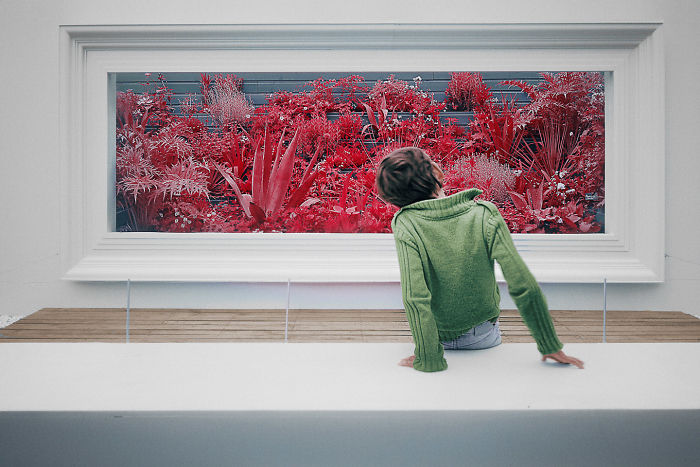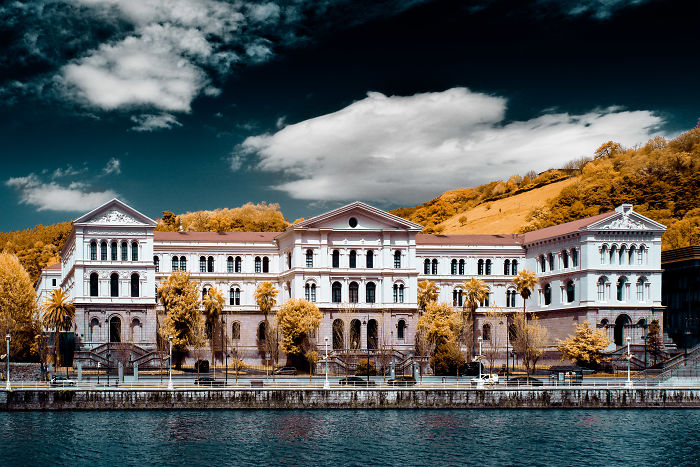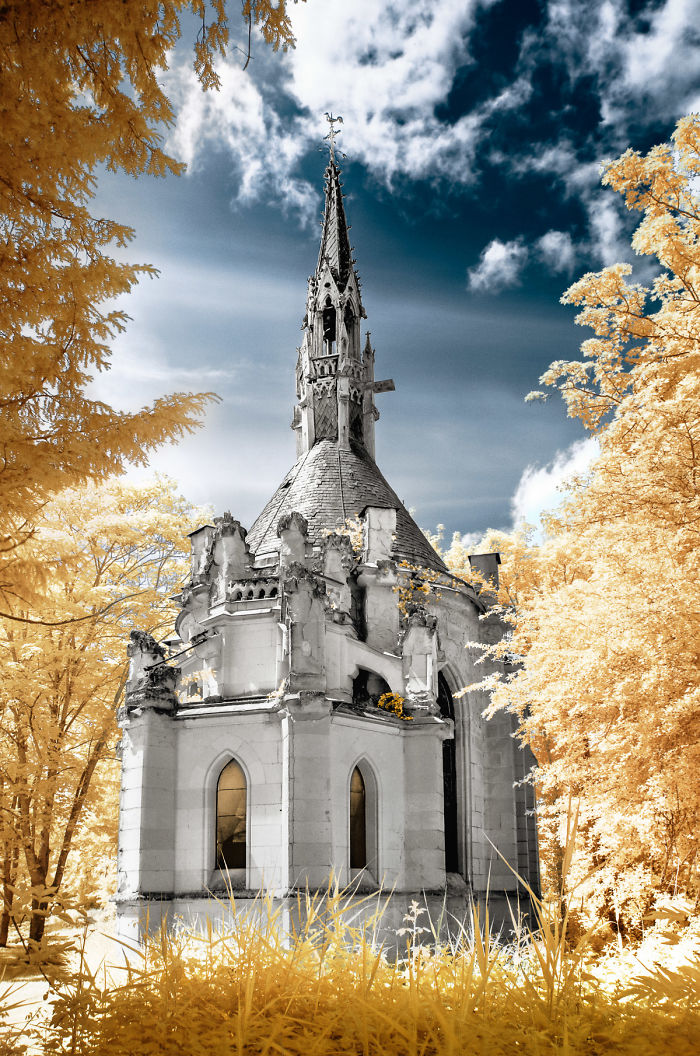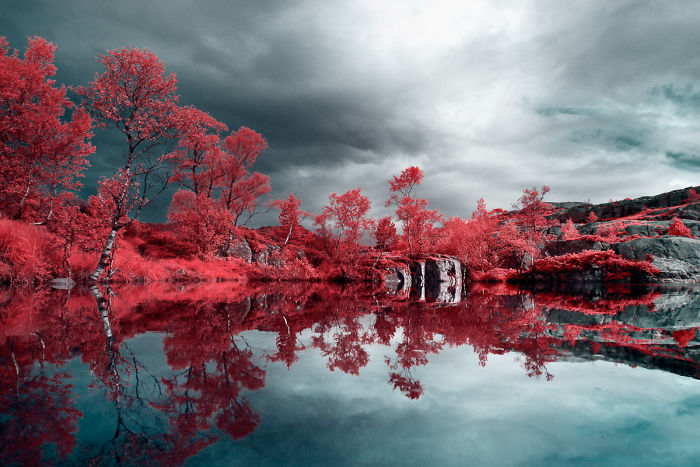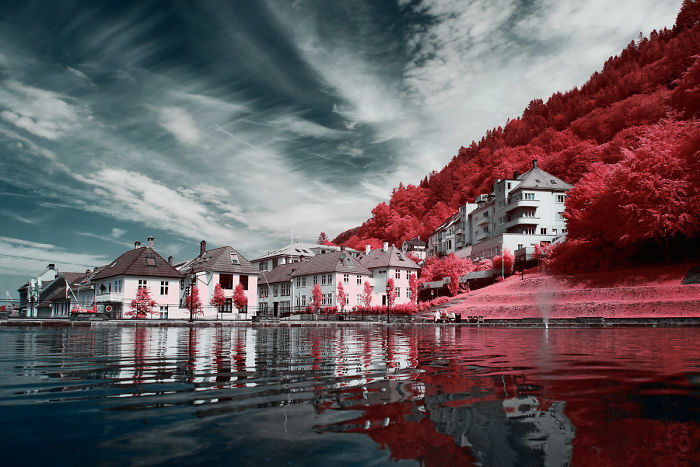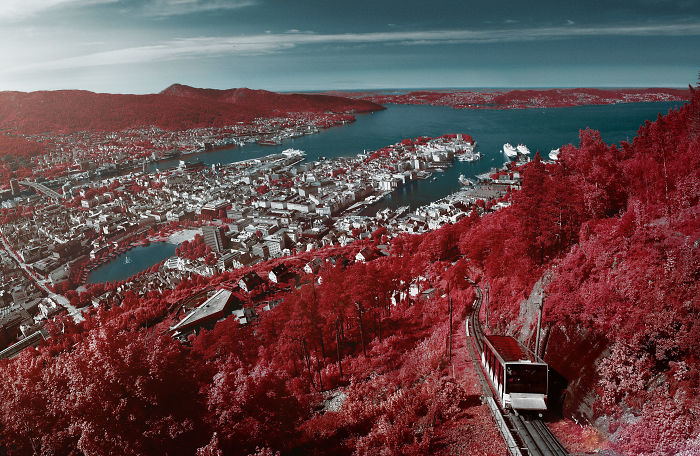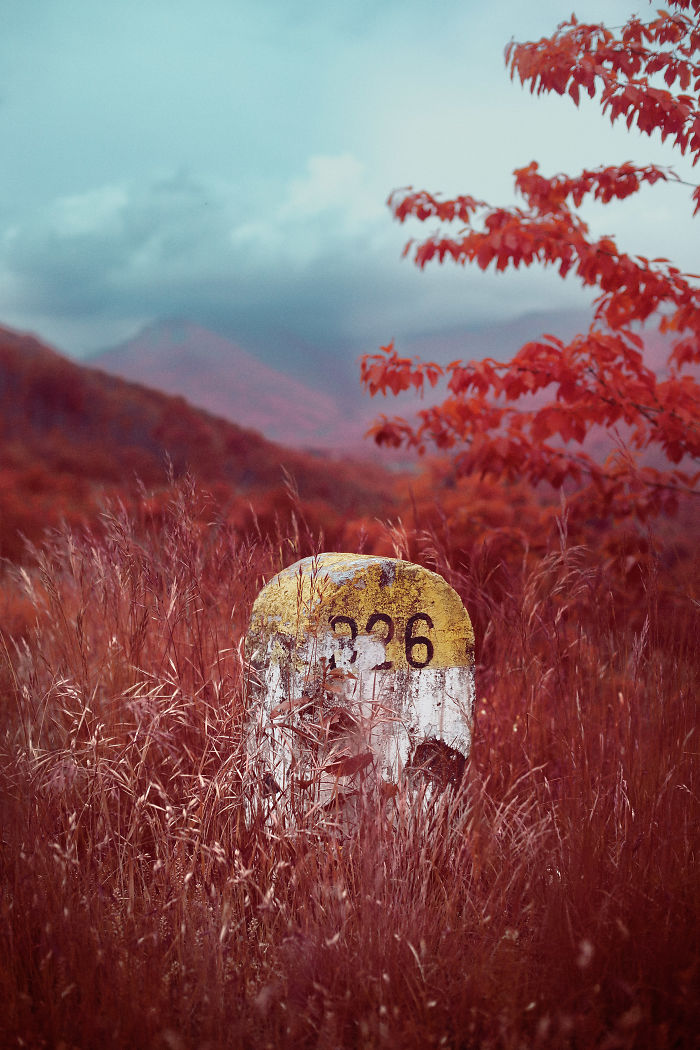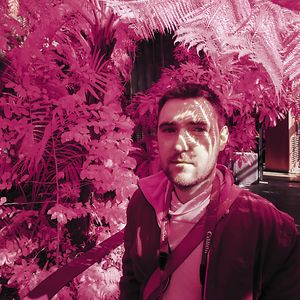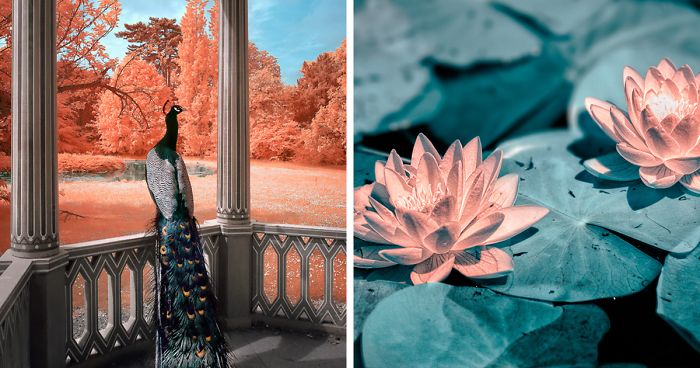
10Kviews
I Made A Lens Filter To Recreate Infrared Photography With My Modified Digital Camera
Before photography went digital, infrared imaging was possible using one of several infrared films available on the market at that time. Most of them were B&W (like Kodak HIE or Rollei IR), but there was also some false color infrared film. One of the most renowned among them was Kodak’s EIR.
Kodak Ektachrome professional infrared EIR film was an infrared-sensitive, “false-color” reversal film. It was intended for various photographic applications where infrared light may yield useful results, such as artistic, industrial, scientific, and aerial or technical ground photography. The amount of infrared reflectance present at any given time would affect the final color rendition. Kodak also sold it as an alternative stock: “Aerochrome III”, primarily designed for military or cartography purposes, in 120 film size. The film can be used to create striking artistic effects due to the false color response. Color rendition is dependent upon exposure, Processes E-6 or AR-5, and the amount of infrared reflectance of the subjects.
With today’s film renaissance (sales are continuing to rise since the past 3 years), many film manufacturers are reviving older films which were previously discontinued, and with the announcement of Kodak’s re-release of Ektachrome in 2017, photographers worldwide are taking an interest into more analog processes for their image making. But, the bad news is that Kodak discontinued the film nearly a decade ago and it won’t come back.
Since 2008 and more actively since 2015 I dove into the EIR digital emulation quest and tried a lot of unexplored methods. My goal was to obtain “in camera” color IR result without having to mix channels in post-production. I tried to go the other way round the color wheel using the complementary color of the yellow/orange filter (used in EIR photography): dark blueish cyan.
After trying and failing a lot during a long run of numerous tests, I finally came up with a precise transmission curve that Kolari Vision eventually managed to produce as a glass filter. After testing many prototypes in various weather conditions and environments, we achieved the new IR Chrome infrared filter.
These are my results when using the IR Chrome filter with a digital camera converted to full-spectrum infrared.
More info: kolarivision.com | yann-philippe.com | Instagram
This post may include affiliate links.
Nice images!
How much different is the filter you used from a standard 80B or 80C?
I'm missing the almost black skies that you get with with the Wratten #12 and KIE. 99AT13_360...520003.jpg 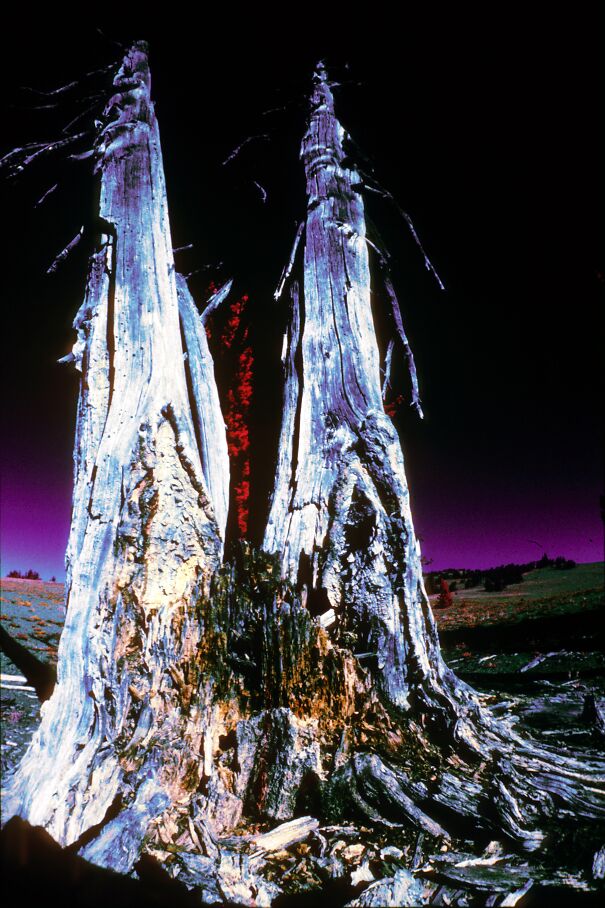
Nice images!
How much different is the filter you used from a standard 80B or 80C?
I'm missing the almost black skies that you get with with the Wratten #12 and KIE. 99AT13_360...520003.jpg 

 Dark Mode
Dark Mode  No fees, cancel anytime
No fees, cancel anytime 













